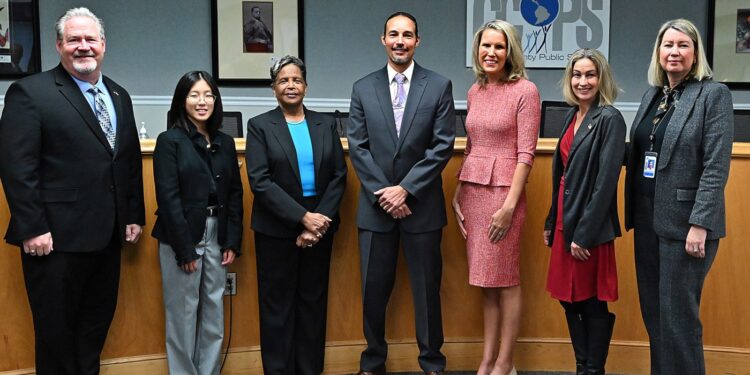
Complying with the Blueprint for Maryland’s Future will bring tremendous change to Carroll County Public Schools, Superintendent Cynthia McCabe said during a school board meeting Wednesday evening.
The district plans to eliminate 92 staff positions and move an additional 90 employees to different schools to realize the goals of Blueprint, a state education reform law in the third year of a decade-long rollout.
“This is about rearranging all of the existing revenue and spending it in a manner that complies with the Blueprint law,” Assistant Superintendent of Operations Jon O’Neal said.
In its fiscal 2026 operating budget, the school system plans to eliminate:
- 22 elementary media clerks
- 11 elementary reading specialists
- 11 elementary math resource teachers
- 7 elementary primary interventionists
- 14 middle and high school media specialists
- 7 secondary academic facilitators
- 4 middle school reading specialists
- 4 middle school math resource teachers
- 1 elementary assistant principal
From central office, two instructional technology teachers, a school counseling mentor teacher, a special education consultant, an instructional technology coordinator, and a career and technical education coordinator would also all be eliminated by next school year.
Carroll County Public Schools has 22 elementary, eight middle, seven high, and four nontraditional schools. Each elementary school will retain its media specialist while losing its media clerk, Assistant Superintendent of Instruction Nicholas Shockney said.
Carroll County will likely need to eliminate, reduce and modify an additional 100 positions next year to comply with Blueprint’s fiscal mandate, Shockney said, and the district will offer fewer courses for middle and high school students.
Compensatory education is the biggest factor in how the Blueprint-prescribed shifting of resources will be felt in Carroll County schools, McCabe told the school board last month. A school’s concentration of compensatory education students is largely determined by the percentage of students at the school eligible to receive free or reduced-price meals.
The system plans to spend $44 million to reach fiscal compliance with the Blueprint, including $27 million for compensatory education, $4 million for multilingual learners, and $13 million to help schools account for the new variance in staffing.
“$44 million is 10% of your unrestricted operating budget,” O’Neal told the school board. “That’s a tremendous amount of money.”
The system’s unrestricted operating budget is more than $423 million in fiscal 2025, including nearly $249 million in county contributions and around $168 million in state aid, according to budget documents.
O’Neal said the district previously expected to spend $39 million to support compensatory education students and $5 million to support English learners, in addition to $13 million to account for the 5% staffing variance.
Carroll is in a particularly bad position to navigate budgetary challenges because the system made more than $40 million in reductions from fiscal 2009 to fiscal 2019, McCabe said.
“This is the first time in a public meeting where we’re able to talk about the operating budget and [Blueprint] fiscal compliance in the same setting,” O’Neal said, “and we’ve been trying to make sure that we explain that these are related, they sort of collide with each other different times, but they’re distinct things. They’re distinct pieces of work, or processes.”
The Carroll County Board of Education is expected to adopt a fiscal 2026 budget Feb. 18, so that it can be forwarded to county commissioners by March 1.
Fiscal 2026 begins July 1.
Have a news tip? Contact Thomas Goodwin Smith at thsmith@baltsun.com.







